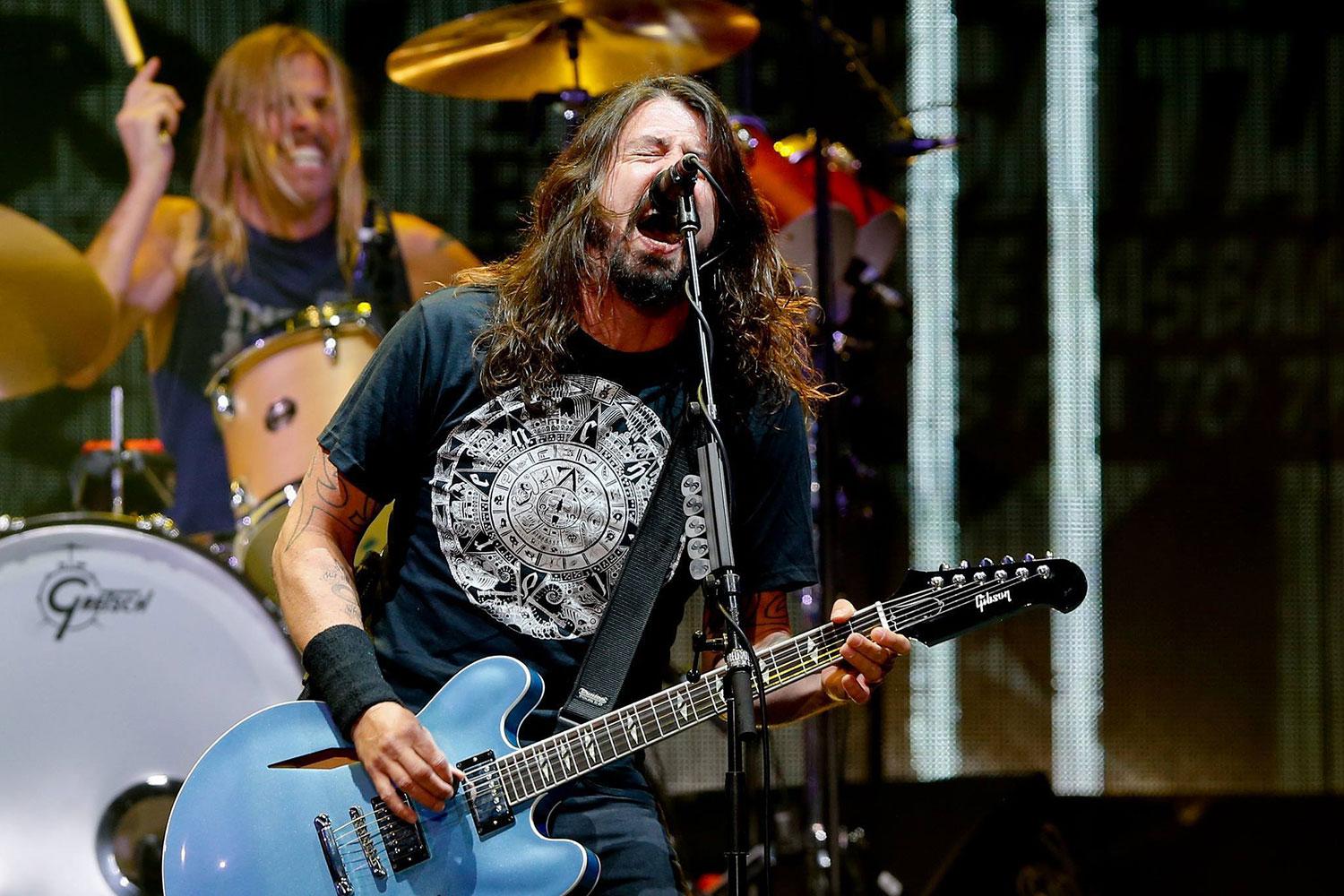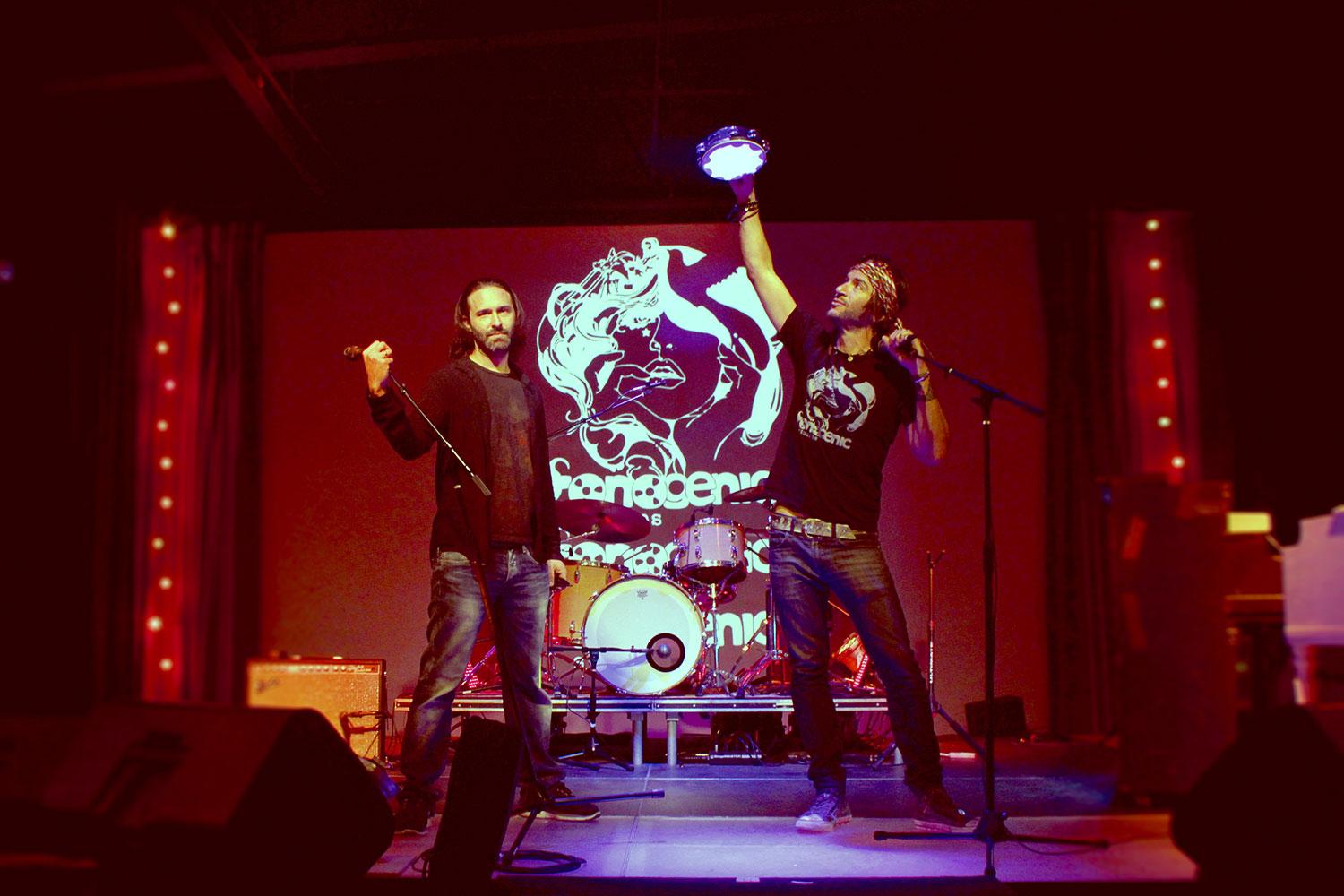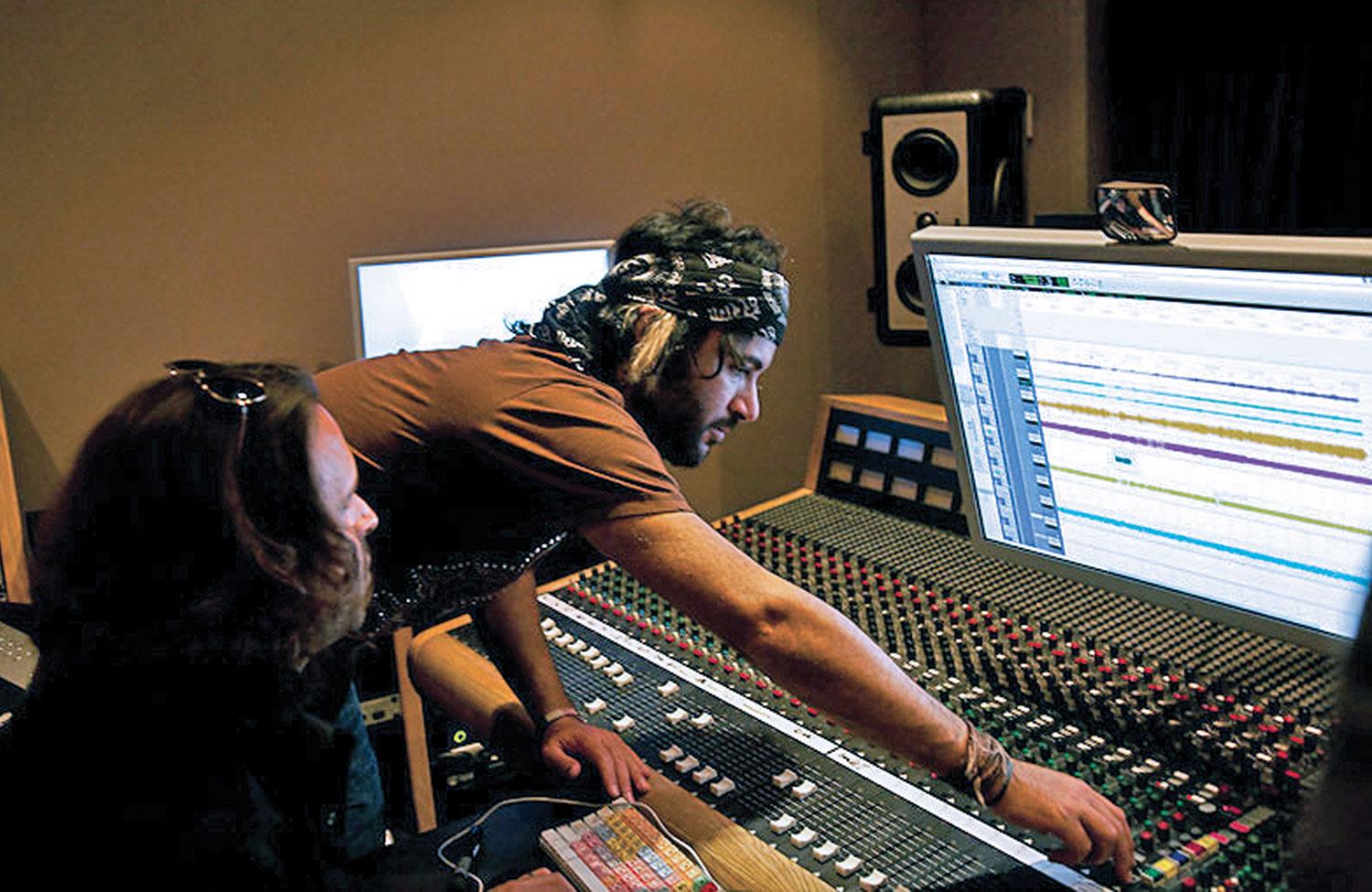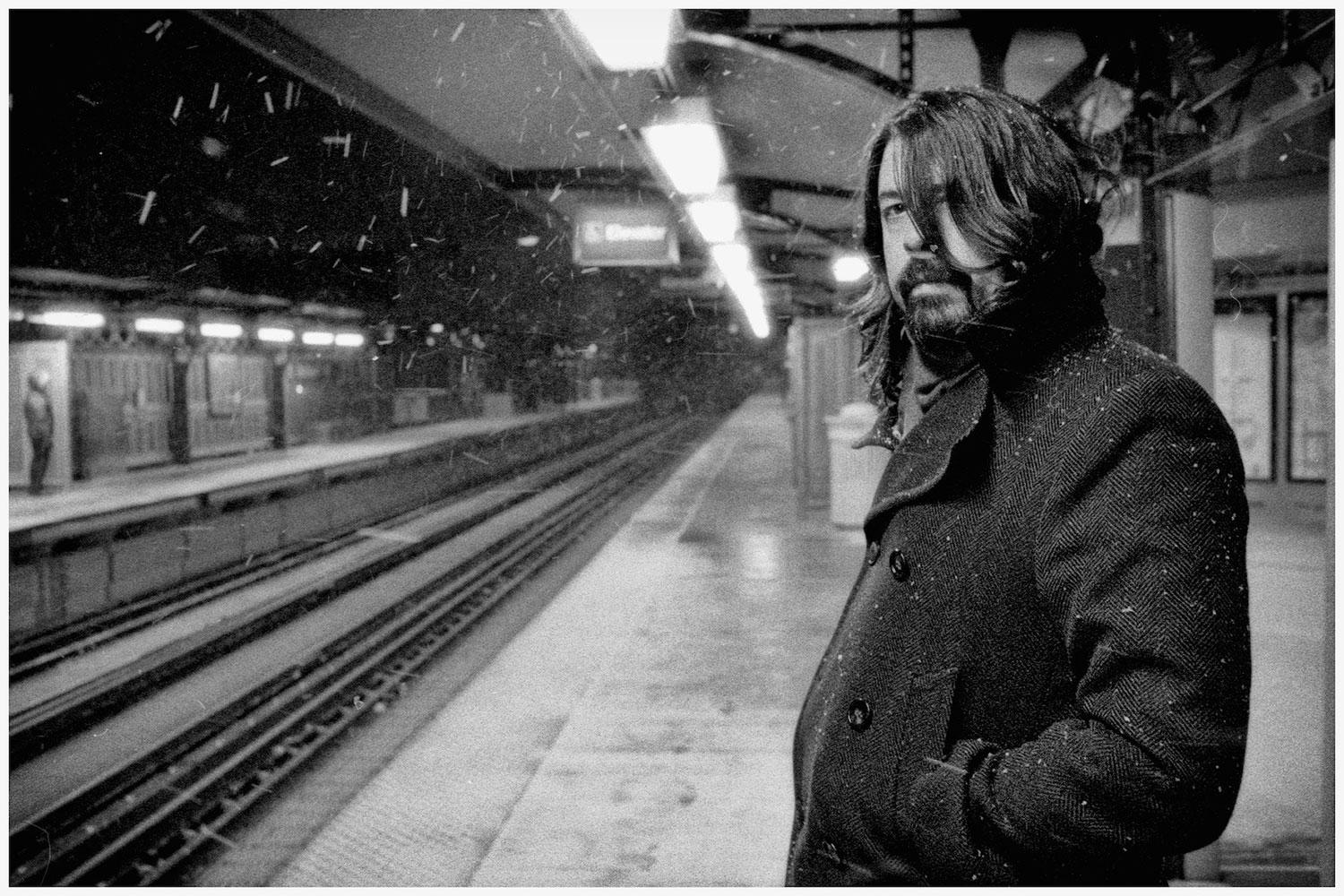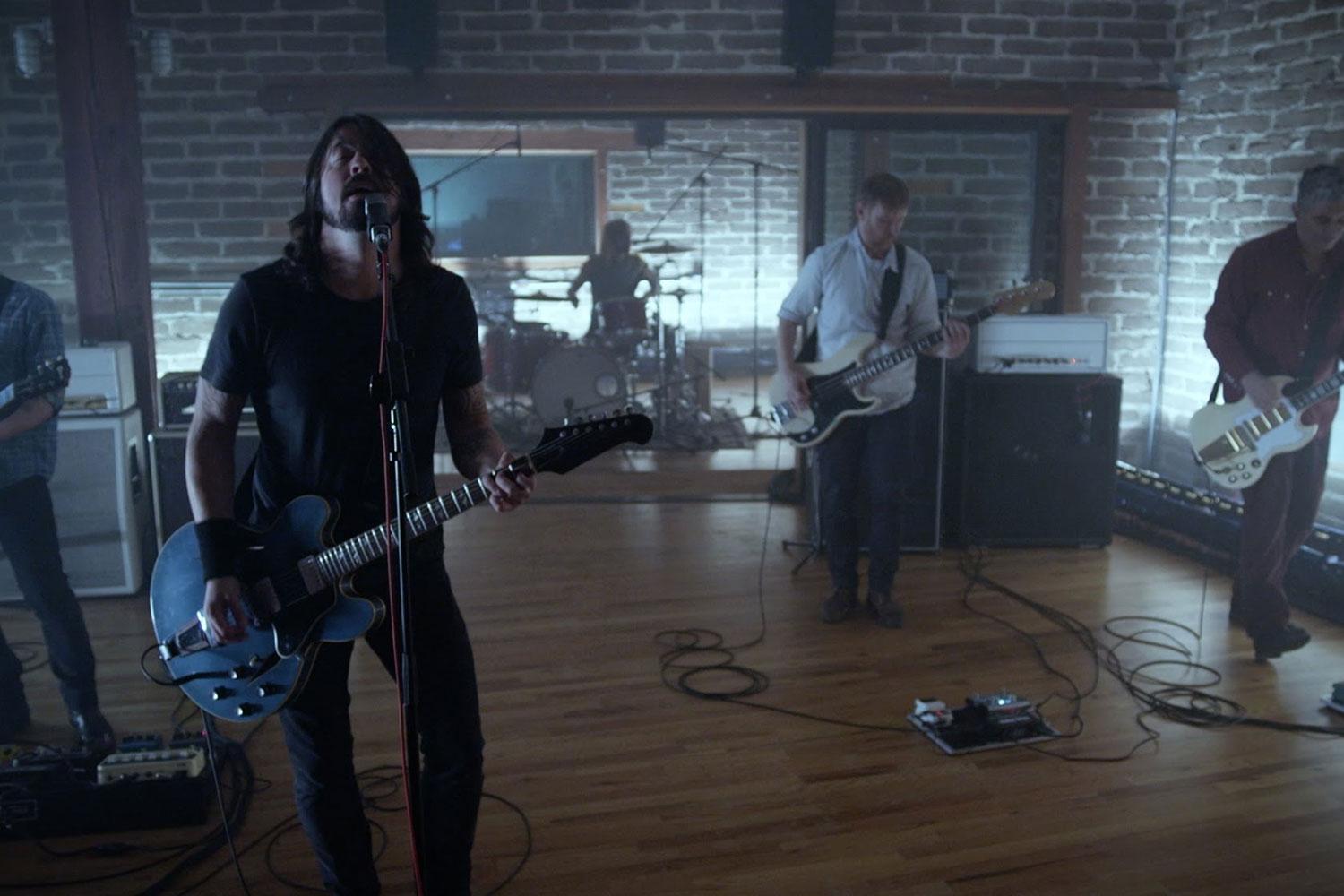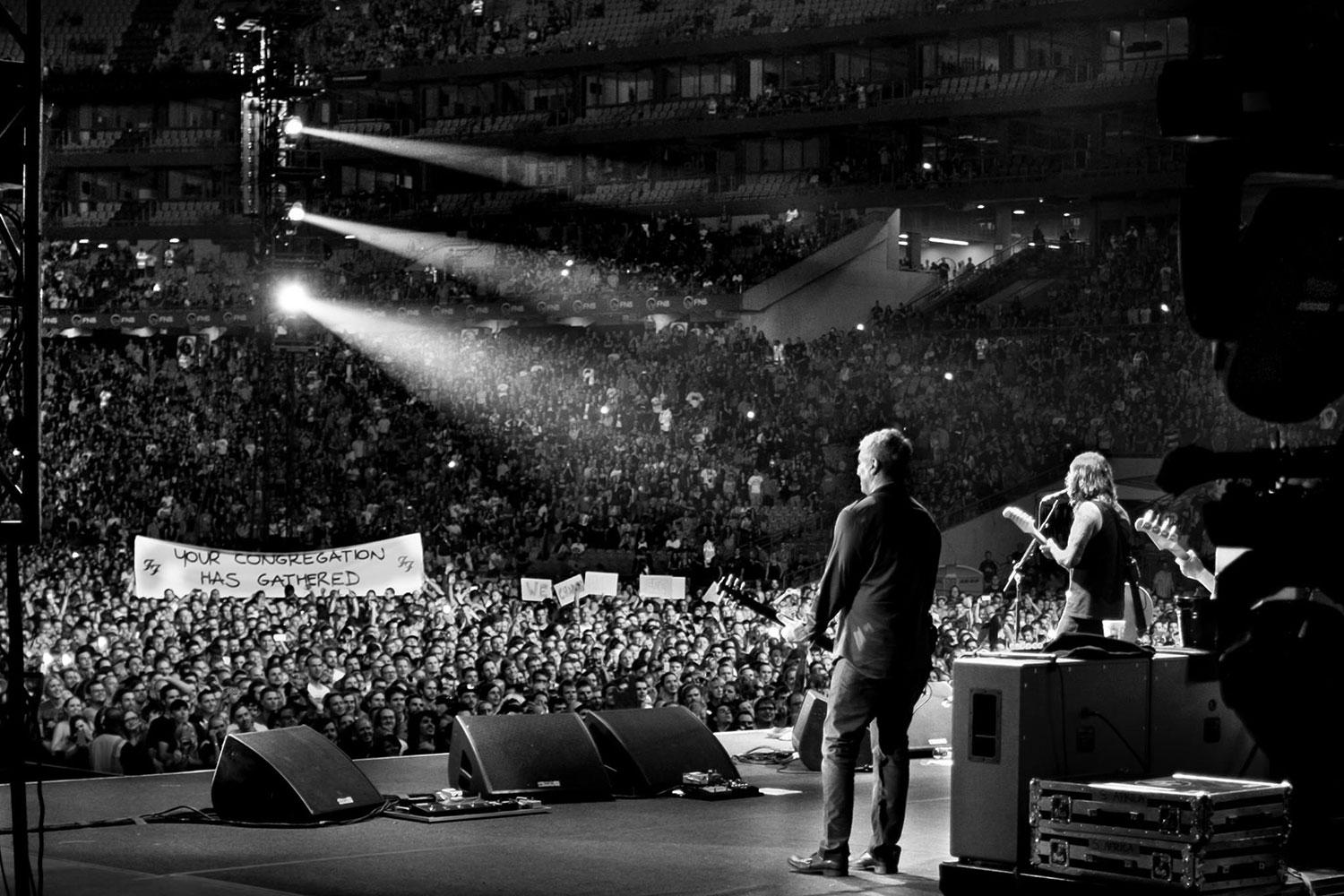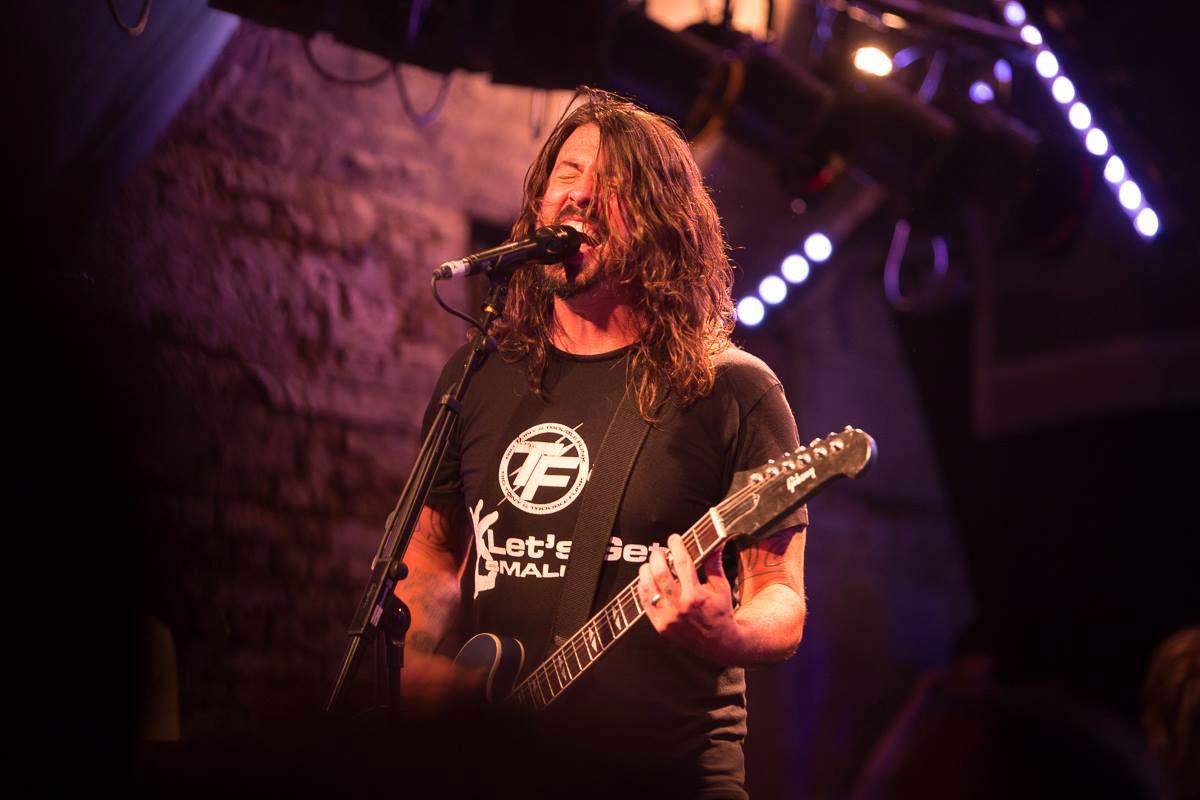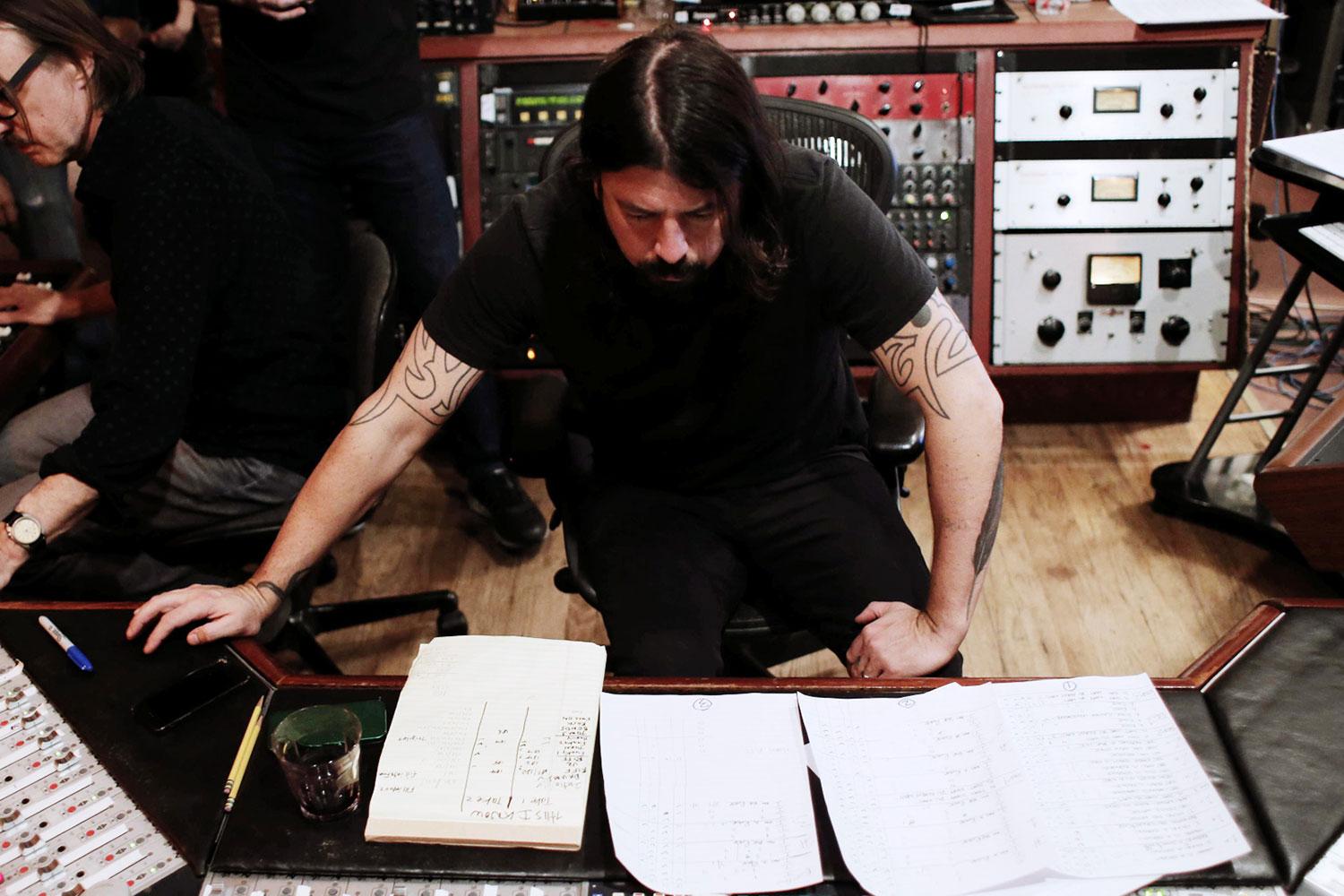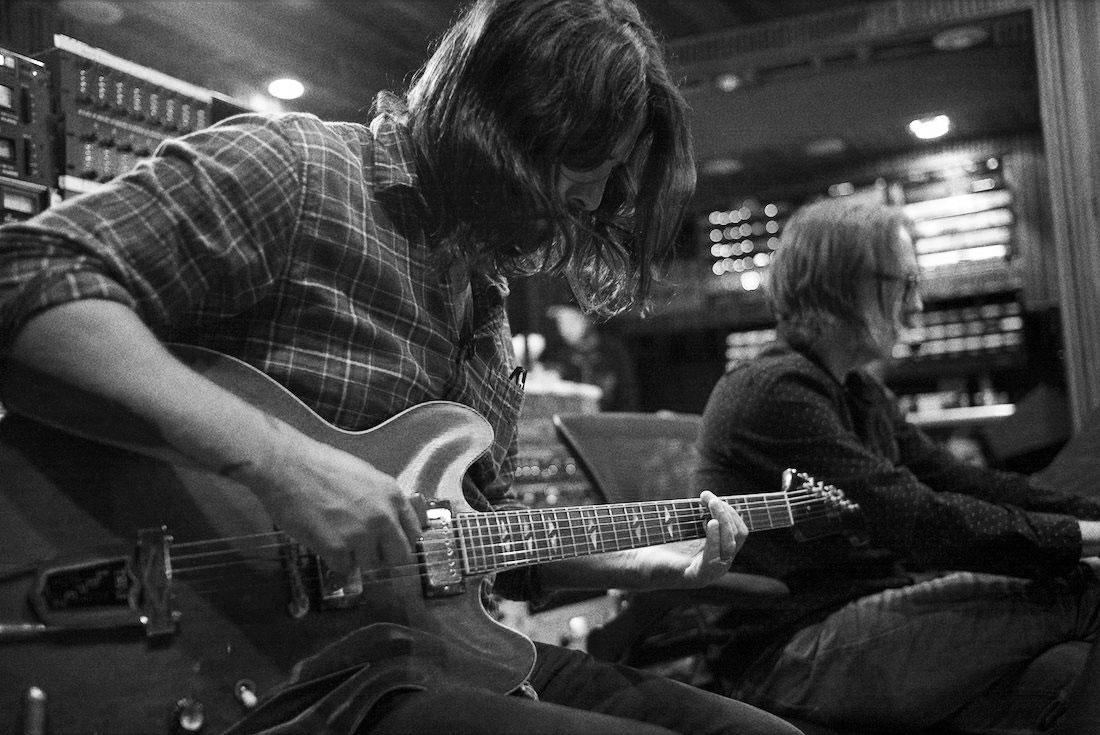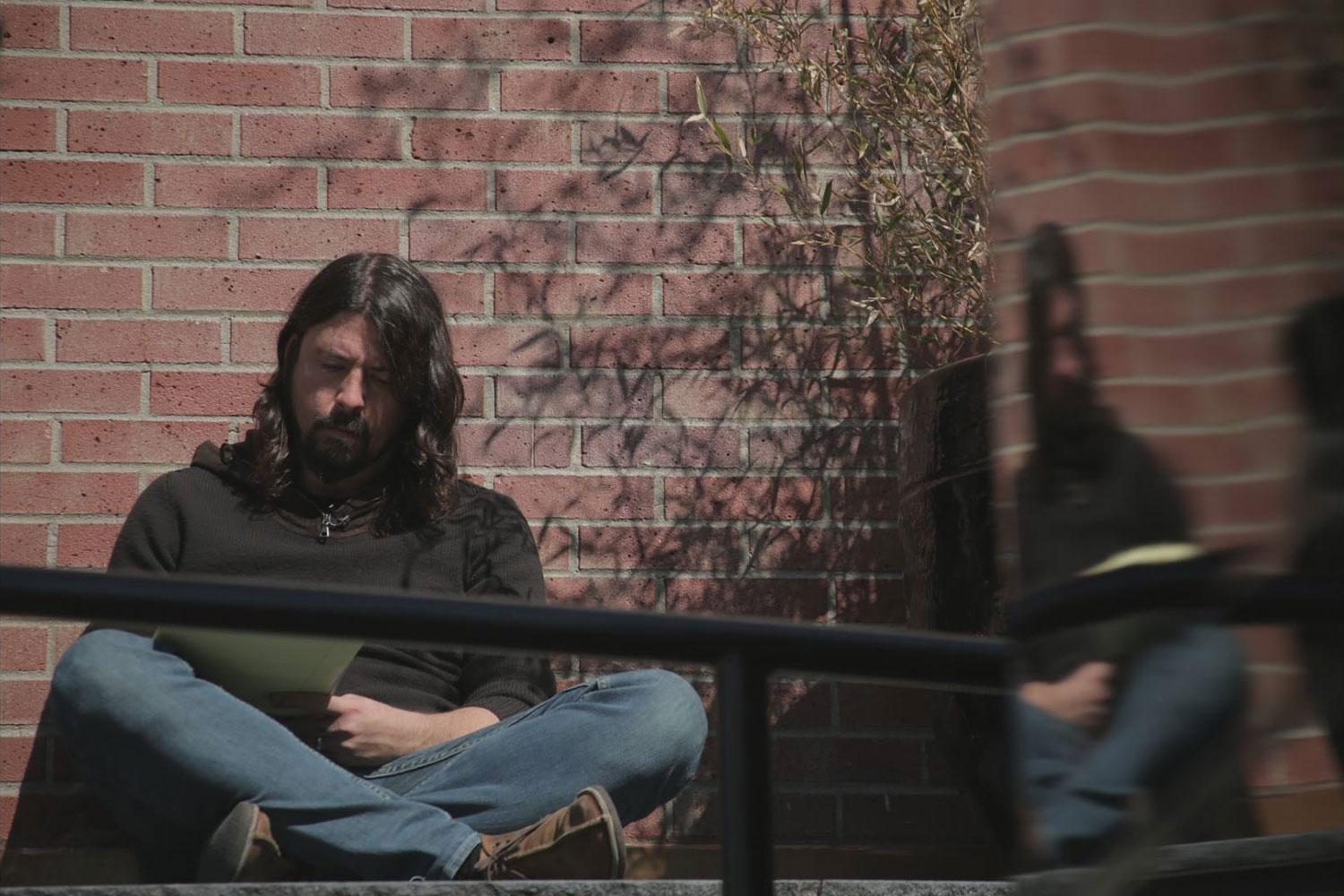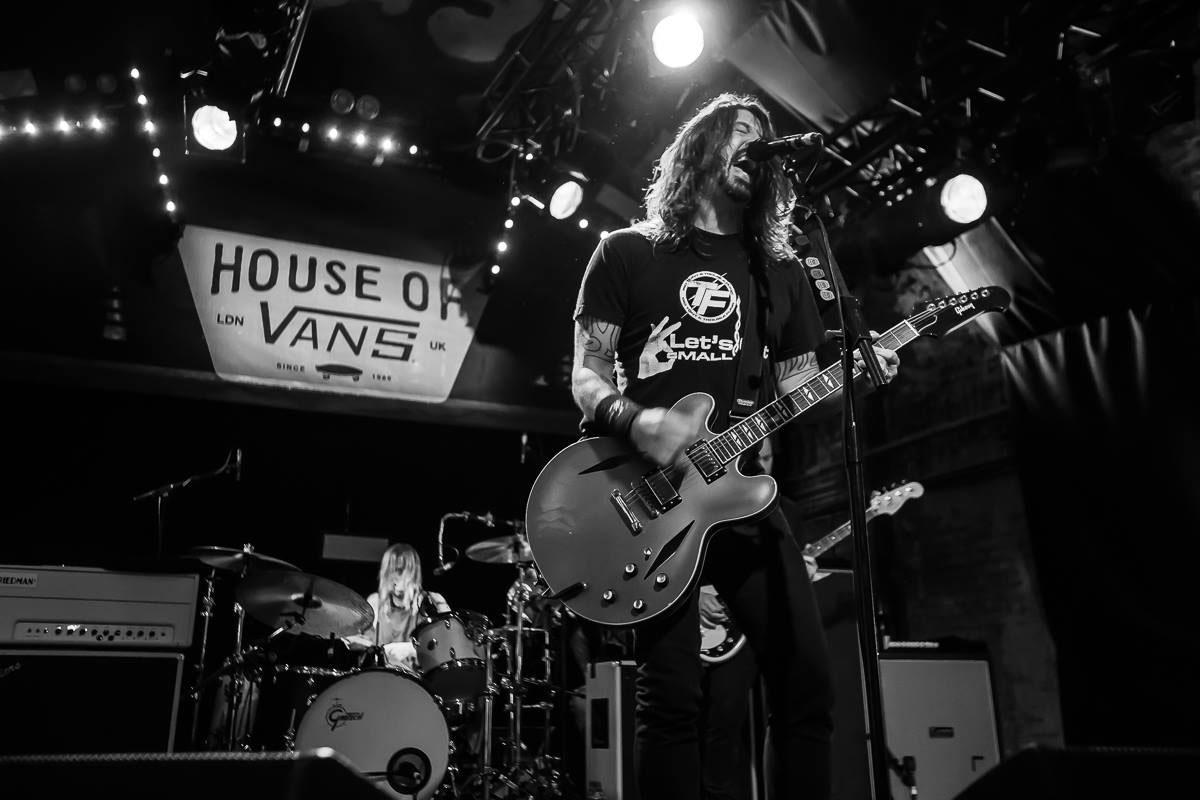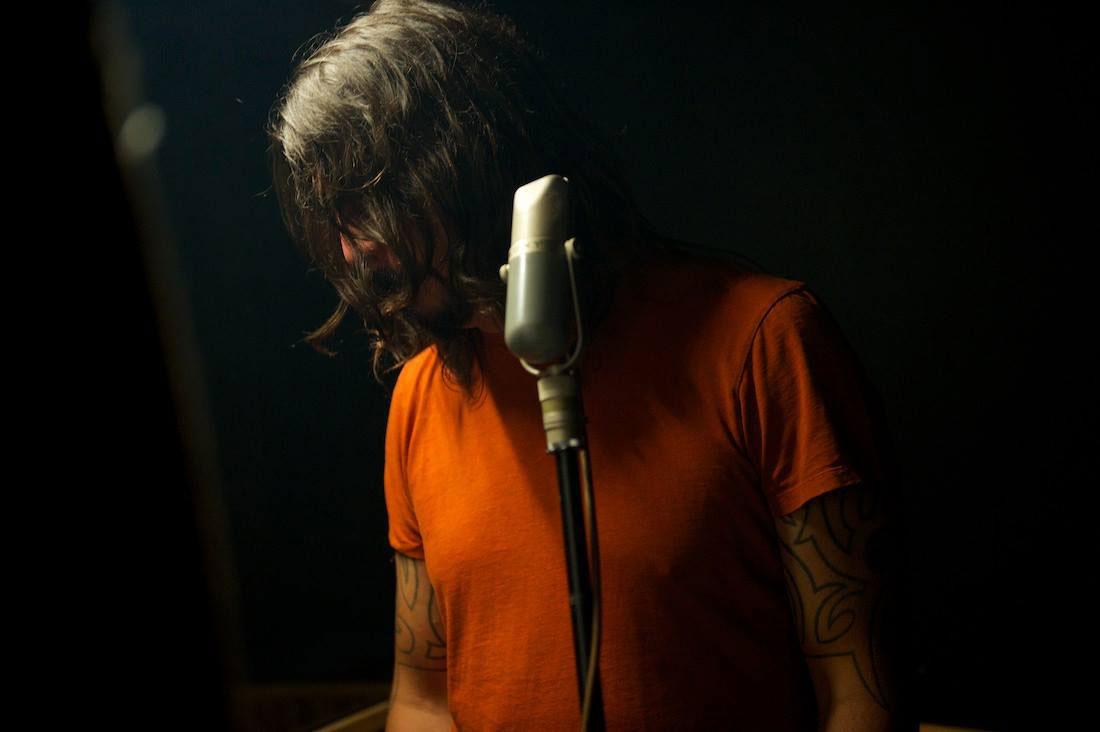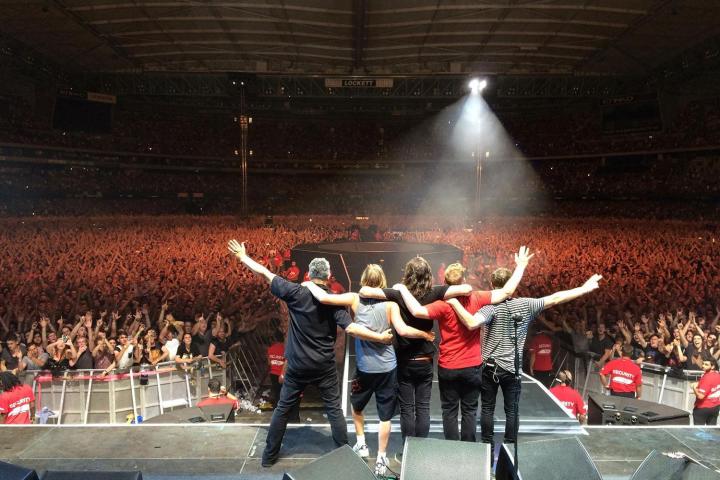
“Everyone thinks Dave Grohl is this happy-go-lucky guy, but he’s the most incredible psychologist in the business.”
“People always say I’m the luckiest one in the Foo Fighters,” laughs Rami Jaffee, the band’s all-purpose keyboardist who can be seen on full display in Sonic Highways, the eight-part HBO rock-docuseries now available on Blu-ray and digital platforms via Roswell/RCA.
Highways was the brainchild of head Foomaster Dave Grohl, who took his band to eight different studios across the U.S. to capture the unique vibe of each respective recording space and the city surrounding it. An additional two hours of behind-the-scenes in-studio footage on Highways shows Grohl, Jaffee, producer Butch Vig, and the entire band playing off each other to get to the heart of the sound they ultimately found in towns like Austin, Chicago, New York, Seattle, and Nashville. Songs like the gnarly Outside and gear-shifting two-parter What Did I Do?/As God Is My Witness show even more depth beyond the layers of crunch in Vig’s 5.1 mix.
“Dave makes a session sound like it’s a party.”
What was Jaffee’s favorite locale for the series? “It was the ‘non’-studio in New Orleans, Preservation Hall,” he reports. “I helped organize us getting in there, so Dave was like, ‘That’s your episode! I’ll give you quotes in the midst of the interviews I do with Dr. John, Allen Toussaint, and Daniel Lanois!’ So I was like, “OK! Let’s go!’”
Besides his ongoing Foos duties, Jaffee runs the much-in-demand Fonogenic Studios in Van Nuys, California with partner Ran Pink. At Fonogenic, artists including Brendan Buckley and Minnie Driver, Jonny Kaplan & The Lazy Stars, and LeAnn Rimes come to rehearse and perform live on the 65 by 20-foot soundstage, as well as record new material. (Rimes is currently there laying down backing tracks for an upcoming Christmas album.)

As for his own C.V., Jaffee spent two decades in The Wallflowers with Jakob Dylan and has been an on-call session player and production foil for artist ranging from Macy Gray, Pete Yorn, Fiona Apple, and Joseph Arthur. “It’s all very much like therapy,” he explains. You have to get in the producer’s head, and the artist’s head. Sometimes they don’t see eye to eye, and then I’m the third factor coming in, disconnected from the band since I’m not in it, for the most part. But it’s about perception — getting into their heads and praying I’m right and I do something that’s going to make them smile. I’m eager to please as well. But the main factor is: What’s the best thing for this song? Sometimes it’s not your first instinct, and you have to go against the gut.”
Though Jaffee and the Foos are in the midst of a break from their massive international tour, which just saw them wrap triumphant runs in South American and Australia, the band is already itching to get back out there for its upcoming summer run in the States. “We hate to break the momentum,” admits Jaffee. “We just texted each other: ‘Should we have a rehearsal tomorrow?’” Before heading to the next gig refresher, Jaffee called Digital Trends from Los Angeles to discuss his recording techniques for Sonic Highways, the value of high-resolution recording, and understanding the benefits of tape in the digital age. Oh, sweet ignition, be my fuse.
“There are three guitars in the band, and they’re heavy all the time.”
Digital Trends: You’re the one adding a lot of interesting textures to all of the Sonic Highways songs. Did Dave have a specific direction in mind for you, or was a lot of it done by feel?
Rami Jaffee: Dave is an incredible drummer, a phenomenal bass player, and a great guitar player. Everybody comes up with a part, but he can go, “Well, why don’t you do more of an 8th note on this thing?” — which is fine. Dave knows what he wants by now. He’ll make comments on the other instruments, but when it comes to keyboards, he’s like, “I don’t know — just do something here!” And I go, “Aha! I get complete say on my input,” you know? But I do go by feel, and we see where that takes it.
It’s nice to have that level of freedom, though — that you’re trusted enough to add the right texture to each song.
Yeah. Dave grew up listening to a lot of music with keys, and I get to translate when he asks, “Dude, go ‘ding-ding-ding’ here!” I’ll just go for it and see what happens. I’ll put down my first instinct, and he’ll say, “That’s awesome.” But there are some times where he doesn’t even have his vocal track, and because of my expertise — especially after being in The Wallflowers for 20 years, and doing all those sessions — I can listen to a vocal and know how to answer with something that’s subtle and not as obvious as, say, a guitar riff right after it.
Everyone thinks Dave is this happy-go-lucky guy, but I can tell you, he’s the most incredible psychologist in the business. Dave makes a session sound like it’s a party. Then a week later, you go, “Oh my God! You think that was an accident?” He says something about the way you played to make you feel great about it. That’s why he’s the smartest guy in the business.
And you wouldn’t have necessarily expected that from his humble behind-the-kit beginnings with Nirvana. He knows how to make everyone around him comfortable, and that’s not easy to do. He saw what to do once he came out of the Nirvana vortex.
Maybe that’s what it was. He was a humble kid and he was seeing a lot, absorbing what Butch [Vig] was doing when he was producing Nevermind (1991). He saw it all and went, “Ok, I know what needs to be done, and what doesn’t need to be done.” (pauses) And now I’ll start a band! (chuckles)
You sure knew what to do with the Mellotron you put on Subterranean, the track you did in Seattle.
“I really like coming in with the wacky stuff.”
My first instrument with the Foo Fighters was organ, but Mellotron seems to fit better on first takes because there are three guitars in the band, and they’re heavy all the time. Organ can add a good little weight in the chorus to be very subliminal and lift it, but it seems like Mellotron can set up a little cello part or vibes or some odd sounds that really add something, because it doesn’t end up being another guitar part — it really stands out.
My favorite track in the Sonic Highways universe has to be the last one that was done in New York with the string section, I Am a River. It’s a great showcase for you live, because you get to do the string arrangement live that Tony Visconti did for the studio version.
Oh, of course, I got it on the ’Tron. Butch and Dave wanted Tony to simplify it, and when I listened to the final version, I thought it was perfect. And I played it note-for-note on Letterman [on The Late Show, October 17, 2014].
I use the Mellotron on everything now. Like I said, my organ was the main thing when I joined the Foos 10 years ago, but over the last two records. I can add something like vibes at the beginning of recordings and Dave will go, “Oh!!” With organ, I’d say (in a delicate voice), “Is this OK? It’s very subtle, but it makes the chorus sound expensive.” (both laugh) I really like coming in with the wacky stuff.
You add a great funky vibe to Something From Nothing.
Oh yeah, that’s me nodding to In Square Circle from Stevie Wonder and [The Band’s] Up on Cripple Creek. When that came out, everybody called me and went, “Oh! There’s Rami!” (chuckles) That’s the thing — sometimes people will say, “I barely hear you, man!” They have to listen. I’m there.
That’s an interesting point, because these mixes are generally packed. But if you listen to the higher-resolution 24-bit files, we can absolutely hear what you’re doing on them.
Exactly! Because dense rock, which most of the Foo Fighters stuff is, really benefits from high resolution and listening to it on high-end gear. People don’t understand — I came from the tape world. When Pro Tools and digital came out for me, it was like, “Oh man, listen how fucking crisp that [Hammond] B3 [organ] is now!” it was almost too warm for me in the olden days. You wanted a high-end tape machine, but you don’t want the mud and the shit. People are looking for those plug-ins now: “How do we really mud this up?” Their reason for going back to tape is for to make it sound like shit! (chuckles) I go, “You guys — trust me. You really don’t want to go too far here. There are benefits of high resolution!”
I remember one of the first Pro Tools sessions I had with The Wallflowers. We were doing some demos in 1994. I’d do some organ, listen to it, and go, “My God! It’s amazing!” I was playing all of these noisy instruments like a Farfisa, which had that real gurgle to it, but it came out in a pristine, crisp, digital version of what I played. I loved it, because you could hear even more weird shit!
“Dense rock, which most of the Foo Fighters stuff is, really benefits from high resolution.”
People don’t understand when they say, “Oh, analog has that vibe, and that attitude, and that character.” Well, sure. But it’s your instrument that has that character. That Paul Reed Smith guitar effect where people go, “Oh man, that’s really rocky and dirty!” — it’s not. You know why? It’s your instrument. But you — you do need a dirty-tape plug-in for that, because you need help in your character department.
It’s gotta come from your soul and your fingers first.
That’s exactly what I mean! Put some character in the beginning of the part and then trust me, you’ll want to hear that in high resolution.
What plug-ins do you like?
Oh God, I love ’em all. Some of the first ones — well, at my studio, we’ve got an Ampex MM-1100 [16-track 2-inch deck/reel-to-reel player], the same one that was at Columbia Recording Studios in Nashville from ’68 to ’81. Dylan’s Nashville Skyline (1969) was done on it, and all this great country shit in the ’70s. Everyone wants to use that. “OK, sure, go ahead!” The truth is, the last seven years, I’m barely engineering.
From earlier Pro Tools days, I loved [Avid’s] Channel Strip, which was basically EQ with a little compression on it. You pull up those little notches of EQ, but it also compresses that. I remember such control on it, which was really fun for doing separate tracks. Vari-Fi [Audio Suite] is also one of my favorites — that buzzing swoop you get on it.
Of course, hello, on every Pro Tools, it’s not even a plug-in, but it’s reverse! God, we gotta try this thing, reverse reverb! OK, so that’s two hours of turning over the machine, and then turning it back and me going, “That sucks! Can we just try that one more time now that I’ve got it figured out?” And then you can’t move it. It bounced like two seconds, but you have to convince an artist and a producer how great it is.
Same thing with (pauses) half-speed! Half-speed used to take a while when you’d have to VSO [i.e., varispeed] the machine, and boom! The machine is very temperamental, so everybody and the engineer have to get out of the room for an hour. Try the part, do the same thing with VSO, then get it back to normal speed to hear the part. And you knowing to do it again perfect is going to take another hour, and you have to pay for it! (chuckles) But I know that’s what The Beatles did, so it’s going to take a minute.
“Once I hear it in surround sound, it’s like cotton candy.”
I love the surround mixes on the Blu-ray for Sonic Highways, because I feel like I’m right in the middle of the performances you guys did in each of those eight different rooms.
Yeah, I love it. I love it. Elliot Scheiner has done a bunch of stuff I’ve been on in 5.1, and every time I listen to a mix of his I go, “My God! You are a wizard!” it sounds like a different song to me. I may have heard it in the studio a million times, but once I hear it in surround sound, it’s like cotton candy. We usually have the organ in stereo — now just imagine if we helicoptered in on there. A Leslie speaker flying around in a surround mix — man! I love it all.
You’re doing a lot more now from the production side of the booth. What have you learned? What advice would you give?
I’ve worked with so many great producers, and so many bad ones. That’s why I feel so great when I’m producing. I know what to do, having watched the greats like Butch, T Bone Burnett, Don Was, Darrell Brown, and Dan Huff.
When I’m a producer, I’ll ask almost any artist to continue to trust me to do the record. I see it as a session guy, where the artist trusts the producer, and they can feel that. And then the producer is making better decisions. The reason why I’ve done so much work is because it seems like I have this naïve thing when I go in there and I can convince them without saying, “My part is great!” Instead, I’ll ask, “Did you guys like that?” It’s more like, “These are not the Droids you’re looking for.” It’s the part that you need. It’s using the Force. It really is.
That’s my best advice. Use the Force. Believe in yourself, believe in your parts. Put your best foot forward to convince your A&R person, your producer, your label head, your manager — all these people who are involved in the project. Don’t be stubborn or whiny. No one’s going to listen. You have to warm them up and have good bedside manner to get your point across. There is a way to do it. I work on it all the time.
Don’t come out as a negative. It’s hard to, because artists are insecure by nature, and if they are trying to get their point across, they could be doing it in a stubborn fashion. Some business people will say, “I don’t know what he does, but I believe everything. Let him go.” Those are the best records to produce.
In a sometimes tense creative environment, it’s easy to lose sight of the basic fact that we are human beings, after all. What’s the point of disrespecting the song, the person who wrote it, and the people who are playing on it?
Exactly. And you should treat the song like a human being too. Be sensitive. Maybe that’s the trick of how to treat the songs when in production. You want to go to that ninth take to get 120 percent instead of just 100 percent. Sometimes you have to try one more time to get to that magic. And then you get the most special thing. If you don’t, you’ll get something that’s just OK, and not magic. It’s all psychology.
